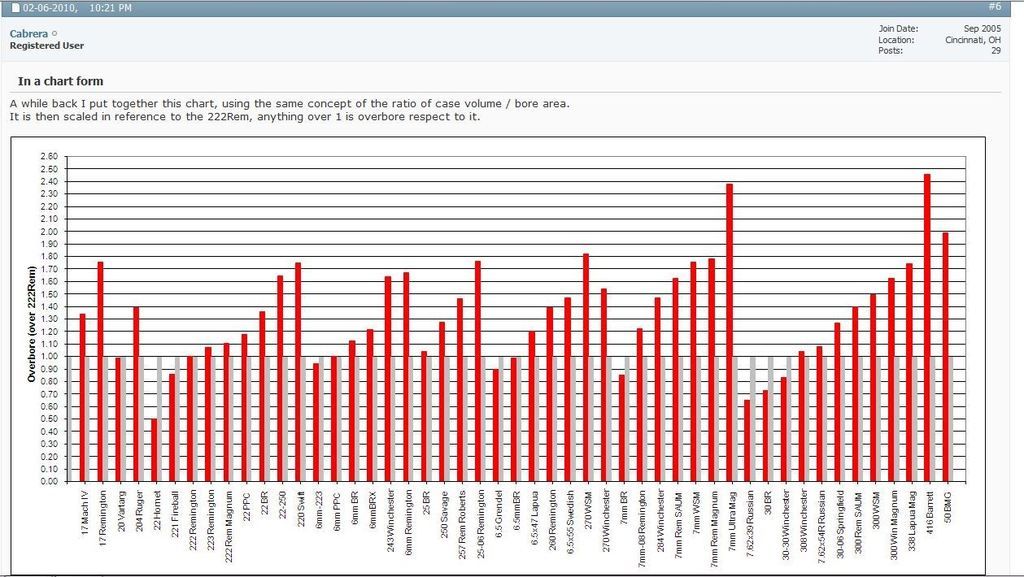I have worked out a measure of how 'overbore' each chambering is, let it be known as the 'B factor'
I considered the 308win as the reference (as a standard power level 30 cal), however the 223 Rem would be overbore in comparison, which didnt sound right...so I went 223.
What is this measure you say?
It is simply, a calculation considering the gross case volume, not net volume as the thickness across the case could only be assumed, the external measurements are standardised............ considered RELATIVE to the area where the gasses and bullet leave the case....factored by 100 to give you a percentage relative to the unity (223Rem) simple.... really. Consider the 223 Rem has a B factor of 100 (remember that).
following are the top 10 per chambering type HG handgun, RF rimfire, MA belted magnum, RI Rimmed, RL Rimless, a lot of these are not commonly encountered;
Some interesting observations;
The 375H&H and 460Weatherby are 103 and 98 respectively, ie. damn close to the 223 (100).....
The 308Win has a B factor of 96... so a bit less volume relative to the little Rem...
The awesome 310 Cadet has a B of 30...... and its Sambar Legal in VIC!!!
700Nitro scores 100.... its the 223 of 70cals!!
22LR = B of 15
500S&W B=42, 460S&W B=48....
In case you're wondering SE V.H. means Super Express vom Hofe
I'll create a list of the common chamberings and attached a spreadsheet with the full list,
Note as mentioned this considers the gross volume, I considered the case less neck volume but the neck length varies, when there is a neck...some cases have very short or very long necks relative to bore, I will further consider the case less bore diameter volume-volume...... so this is really a talking point exercise if you like....








 got to use it now) is lower than the 223Rem.... ultimately the gases and solids/unburnt matter, need to exit the case, the ideal from a fluid dynamic POV is the radiused bell mouth - efficient, laminar less turbulent flow (Weatherby used engineering design in his cases) to get the burnt and burning stuff out of the case and as quick as possible with least losses - so an abrupt change will increase the resistance and heat/friction. But to what extent that theory applies to deflagrating propellant..??
got to use it now) is lower than the 223Rem.... ultimately the gases and solids/unburnt matter, need to exit the case, the ideal from a fluid dynamic POV is the radiused bell mouth - efficient, laminar less turbulent flow (Weatherby used engineering design in his cases) to get the burnt and burning stuff out of the case and as quick as possible with least losses - so an abrupt change will increase the resistance and heat/friction. But to what extent that theory applies to deflagrating propellant..?? Rifle stock and pistol grip reproduction.
Rifle stock and pistol grip reproduction.


 Do you know what that is? (off to google
Do you know what that is? (off to google  )
)
